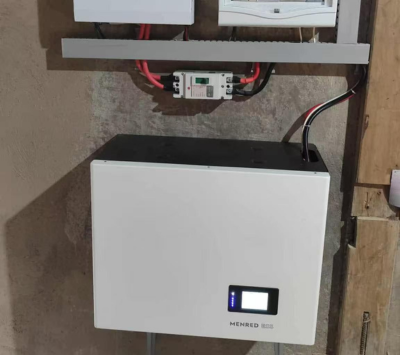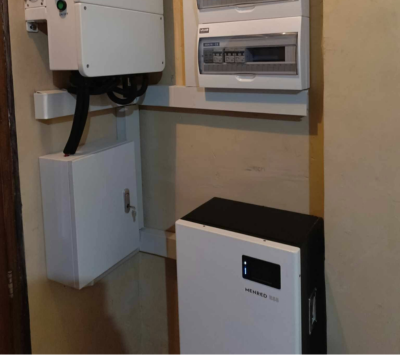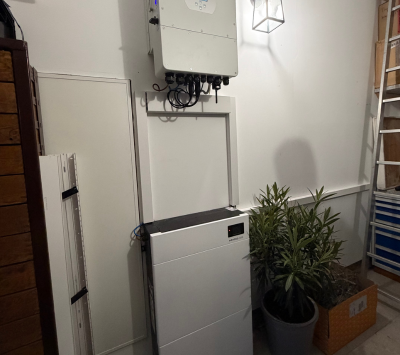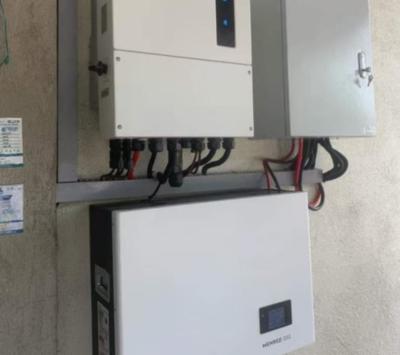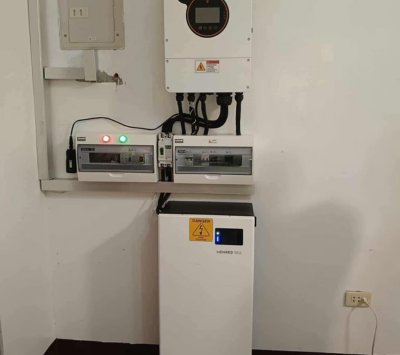In the realm of residential solar photovoltaic (PV) storage systems, 48V lithium batteries have solidified their status as the premier choice for homeowners worldwide. Renowned for their superior efficiency and longevity, these batteries stand out in the crowded field of energy storage options. The affordability of lithium technology has seen a significant downward trend, making it more accessible to a broader audience. This price reduction has catalyzed the widespread adoption of lithium batteries in home energy systems, as more homeowners seek cost-effective ways to store solar energy. The 48V lithium battery’s rise to prominence is not just a testament to its technical superiority, but also reflects a growing global commitment to sustainable living. By providing reliable energy storage during peak sunlight hours and ensuring uninterrupted power supply, these batteries are at the forefront of a shift towards greener, more self-sufficient homes.
What is 48V battery?
What is the Full Charge of a LiFePO4 48V Battery?
The term ’48V’ is often a misnomer for LiFePO4 batteries. The standard 16S (16 series) configuration should equate to 51.2V. The 48V label is crucial as it represents an ideal voltage for many applications, balancing energy output with safety. Users must understand this difference to select the right battery, especially in solar energy storage and electric vehicles, where precision is key.

Calculating the full charge capacity of a 48V LiFePO4 battery requires understanding its actual voltage. For a standard 16S battery, the calculation uses 51.2V. The capacity formula is Capacity (Wh) = Nominal Voltage (V) x Capacity (Ah). The BMS plays a vital role in calculating the battery’s total capacity through ampere-hour integration algorithms, focusing on charge and discharge capacities to determine the State of Charge (SOC). The SOC, rather than voltage, is the primary indicator of capacity in BMS-equipped LiFePO4 batteries.
Factors such as temperature, age, usage, and voltage configuration influence a LiFePO4 battery’s full charge capacity. Differences in voltage configuration, like 15S vs. 16S, impact efficiency and longevity. Regular maintenance and understanding the voltage configuration and BMS function are crucial for optimal performance.
What is the Advantage of a 48V Battery?
In the context of modern home electrification, the advantages of a 48V battery system become particularly evident. Today’s homes, equipped with a variety of electrical appliances, typically have a total power requirement that is well-managed within the 6KW to 10KW range. Considering this, let’s explore the impact of voltage levels on residential power systems. With a 12V system, a 6KW output demands a hefty current of over 500 amps. Even at 24V, the current requirement remains high at over 250 amps. The situation becomes even more pronounced with a 10KW load, where a 12V system would require an astonishing 900 amps or more, posing significant safety concerns in a residential setting.
In stark contrast, a 48V (or more accurately, a 51.2V) battery system elegantly addresses these challenges. For a 10KW load, it only requires a manageable 200 amps, and for a 6KW inverter, a mere 120 amps suffice. This dramatic reduction in necessary current not only enhances the overall safety but also makes the system more user-friendly for residential applications. The lower amperage at higher voltages reduces the risk of overheating and potential hazards, making 48V batteries an ideal choice for home energy systems.
Beyond the evident safety and efficiency benefits, the widespread availability and cost-effectiveness of 48V (or accurately, 51.2V) lithium batteries in the market further bolster their appeal. These batteries strike an optimal balance between performance and affordability, making them a pragmatic choice for residential energy systems. In contrast, higher voltage systems like 96V present significant challenges in terms of cost and accessibility. Such systems are not only more expensive but also harder to find in the market. Additionally, the current popularity of inverters in the market aligns predominantly with 51.2V DC systems, making them a more feasible option for the majority of residential applications. This compatibility with popular inverter technologies enhances the practicality of 48V battery systems, ensuring they remain the top choice for homeowners looking to optimize their solar energy solutions.
How to Charge and Operate a 48-Volt Lithium-Ion Battery?
Properly charging and operating a 48-volt lithium-ion battery involves a critical component: the Battery Management System (BMS). Legitimate lithium-ion batteries in the market are equipped with a BMS that communicates with inverters or MPPT solar chargers using protocols like CAN or MODBUS. This communication is essential for maintaining the system’s stability and safety, as it allows the battery and inverter to inform each other in real-time about any operational issues.
Contrastingly, some non-compliant manufacturers produce lithium-ion batteries with just a basic protection board, lacking data communication capabilities. This shortfall can lead to hazardous situations, as the absence of communication means one device cannot notify the other in case of malfunctions, potentially leading to system damage or fire risks.
When a BMS is connected and operational, it calculates the battery’s State of Charge (SOC), which represents the current capacity of the battery. This is not just based on voltage levels but also on the quantified electricity charged and discharged, ensuring accurate knowledge of the battery’s available capacity. Furthermore, the BMS’s ability to monitor each cell individually allows for immediate notification to the inverter in case of any cell malfunction, thereby significantly improving the safety and effectiveness of the entire system.
Applications of 48V LiFePO4 Batteries
In applications like residential solar energy systems and electric vehicles, choosing between 15S and 16S LiFePO4 batteries can significantly impact performance. The standard 51.2V (16S) batteries are generally more suited for these applications, offering efficient power management. Understanding the voltage level and the BMS’s role is essential for utilizing the full potential of these batteries.
Maintenance Tips for Optimal Performance
Maintaining a 48V LiFePO4 battery involves regular checks, proper charging practices, and understanding its voltage configuration and BMS functionalities. Ensuring compatibility with intended applications is crucial for maintaining long-term performance and reliability.
Understanding the full charge capacity and the actual voltage level of a LiFePO4 48V battery is essential for effective utilization. Differentiating between the standard 51.2V (16S) and the 48V (15S) configurations is critical. With this knowledge, users can leverage the capabilities of these batteries in various applications.
Special Mention of MENRED ESS Batteries
MENRED ESS LFP.6144.W and LFP.6144.G seires LiFePO4 battery ensures the highest quality in their production of batteries, strictly adopting a 16-series (16S) configuration to guarantee the standard 51.2V voltage level. The company prides itself on using only the freshest batteries, meticulously controlling the process from cell production to pack assembly within a 90-day period. This approach ensures peak performance of the batteries. Additionally, MENRED ESS’s Battery Management System (BMS) is equipped with over 115 sensors, providing detailed and clear information on the LCD display. This advanced level of monitoring and management positions MENRED ESS’s LiFePO4 batteries at the forefront of the industry in terms of safety, efficiency, and reliability. These batteries meet the high standards required for residential, commercial, and industrial applications, demonstrating MENRED ESS’s commitment to excellence and innovative technology in battery production.


